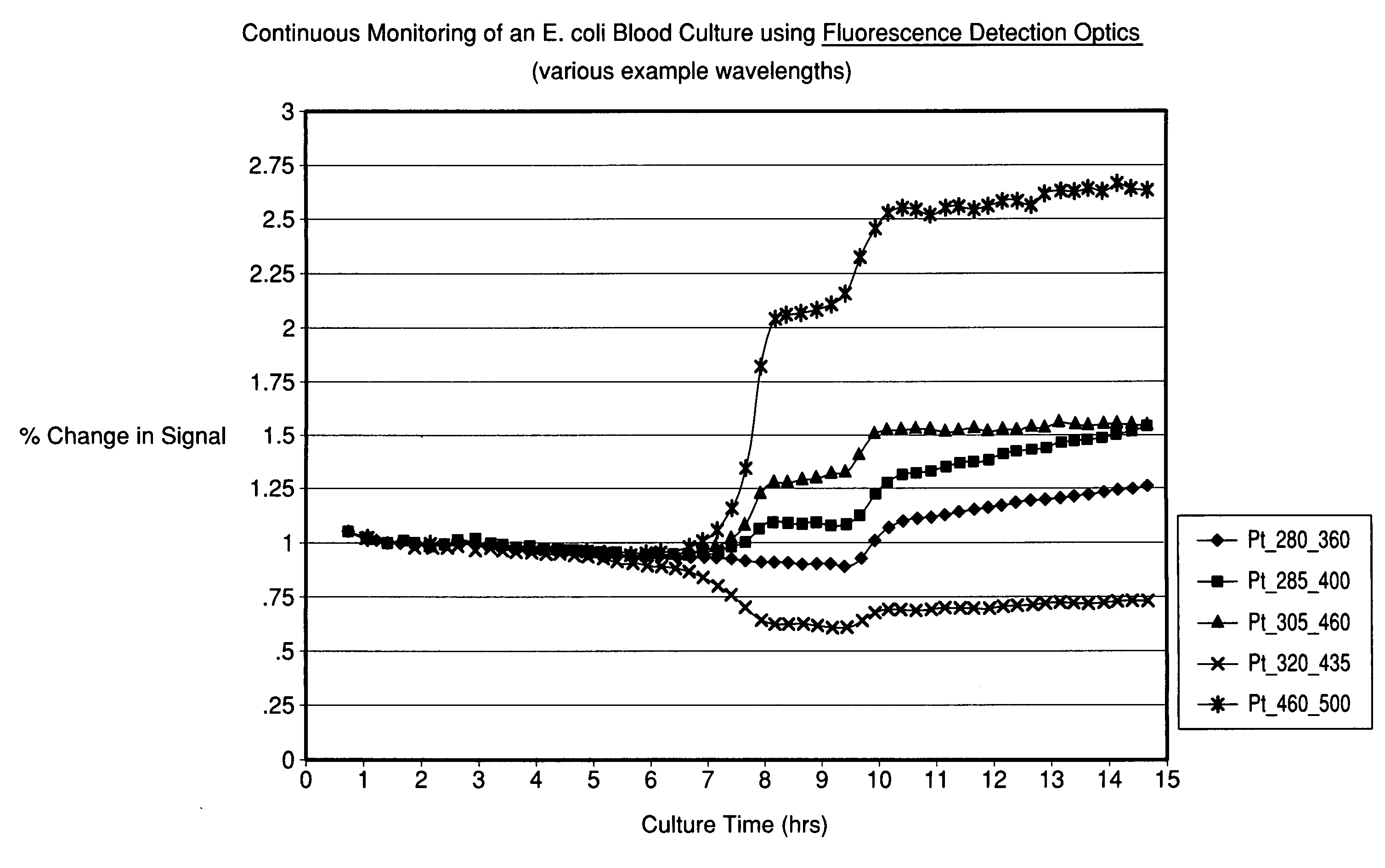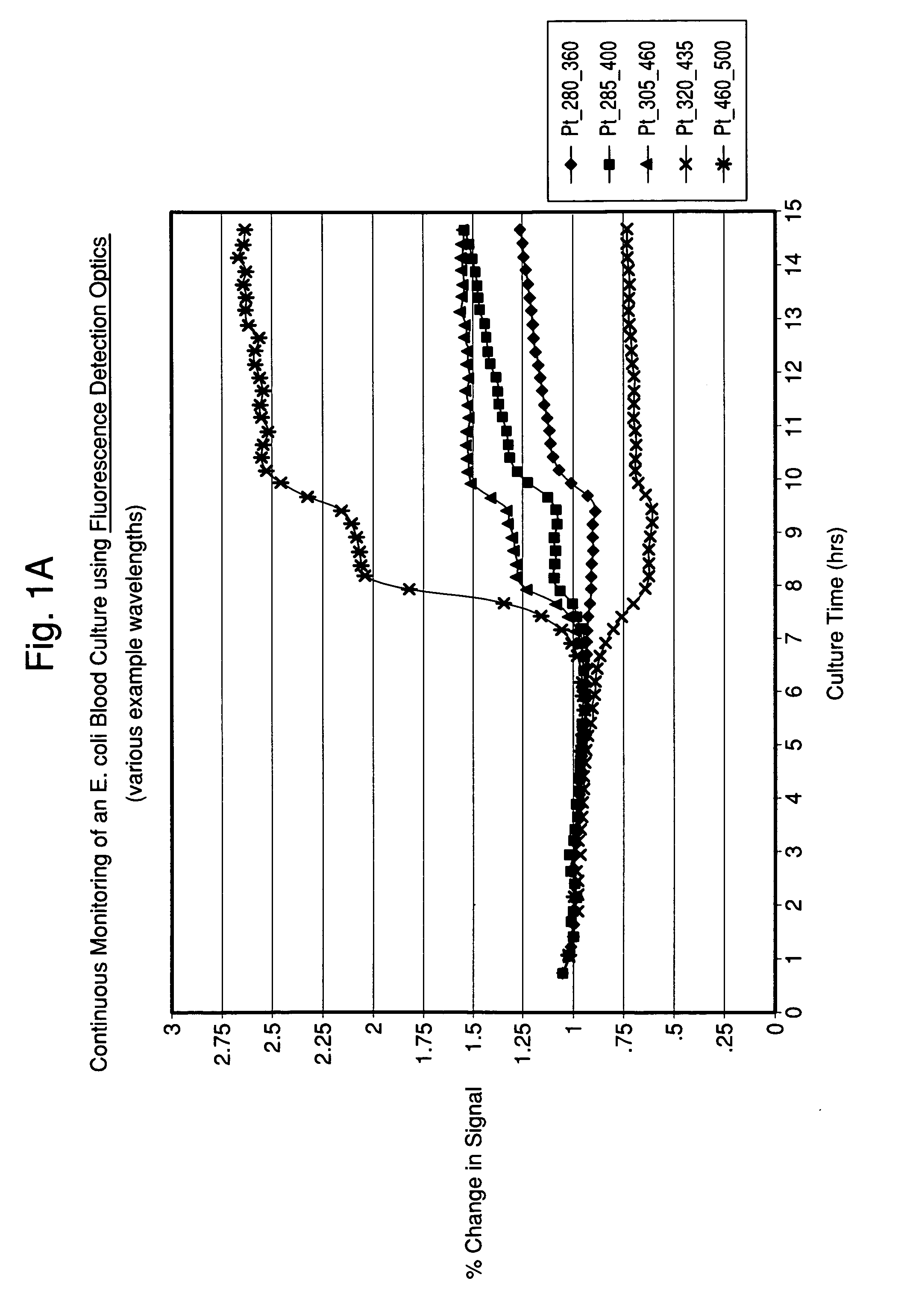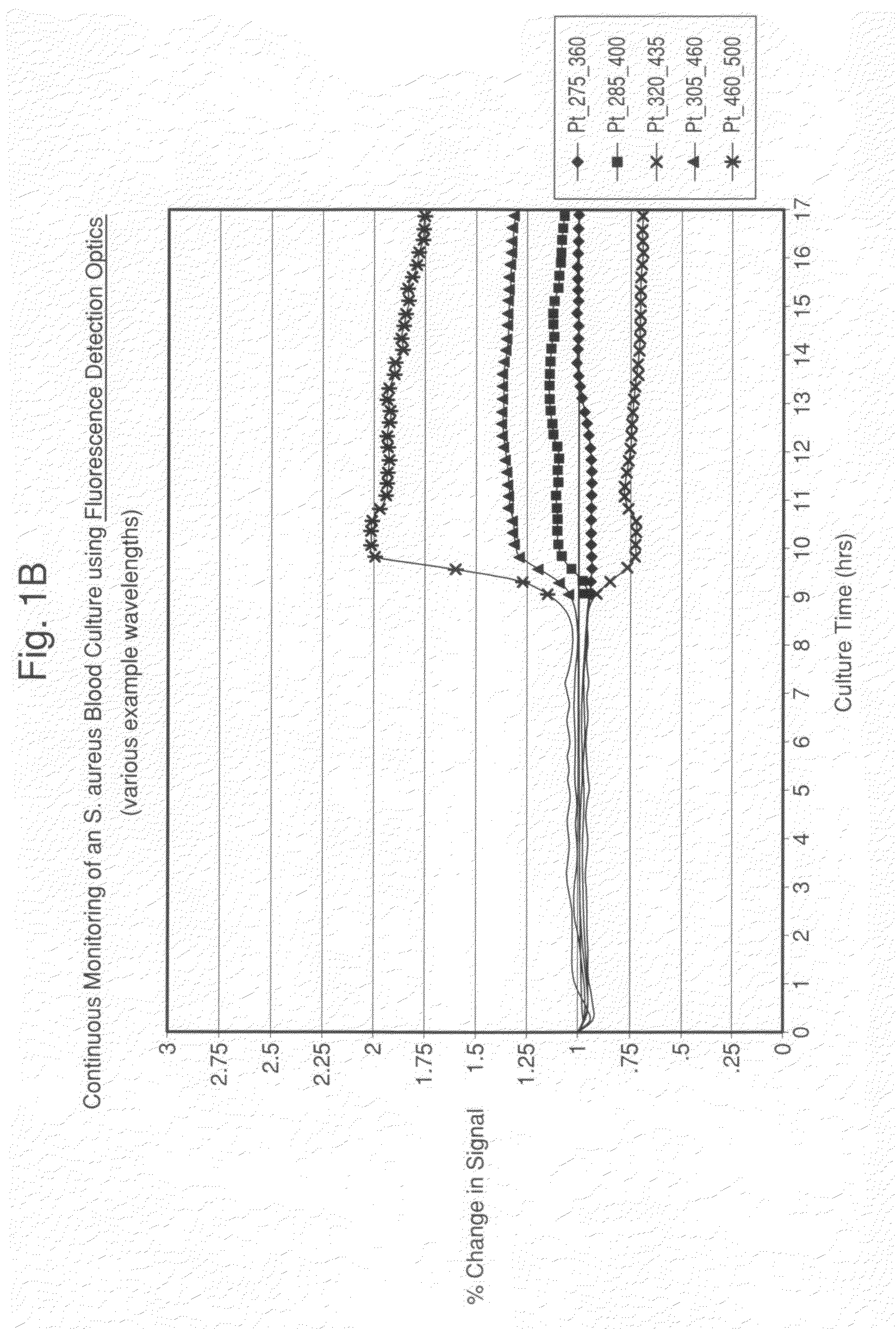Method and system for detection and/or characterization of a biological particle in a sample
a biological particle and sample technology, applied in the field of methods and systems for monitoring, detecting and/or characterizing samples, can solve the problems of limited sensitivity of this approach, standard automated blood culture instruments, and lack of information about the characterization or identity of microorganisms, so as to improve efficiency and safety
- Summary
- Abstract
- Description
- Claims
- Application Information
AI Technical Summary
Benefits of technology
Problems solved by technology
Method used
Image
Examples
example 1
Blood Culture (Culture Medium and Blood Sample) in Quartz Cuvette in Waterbath Adapter
[0066]Seeded blood cultures were set up in autoclaved 1.0 cm screw-capped quartz cuvettes (Starna, Inc.) containing a stir bar for agitation. To the cuvette was added 2.4 mL of standard blood culture medium, 0.6 mL of fresh normal human blood and 0.05 mL of a 103 / mL suspension of test microorganism (approx. 10 CFU / cuvette). A sterile, septum screw cap was placed on the cuvette, and it was inserted into the front-face adapter previously described. The culture was maintained at approximately 36° C. by connecting the adapter to a recirculating water bath heated to 36° C. The cuvette was read every 45 minutes by the Fluorolog 3 fluorescence spectrophotometer that was software controlled. A full EEM spectra was collected at each time point with an Excitation wavelength range of 260-580 nm (every 5 nm) and an Emission wavelength range of 260-680 nm (every 5 nm) for a total of 3,139 data-points per scan. ...
example 2
Blood Culture in Acrylic Cuvette in Waterbath Adapter
[0069]An E. coli blood culture was set up as described in Example 1 with the exception that the cuvette was constructed of a UV-transparent acrylic (Sarstedt 67.755), and sterilized by ethylene oxide treatment. The change in the autofluorescence or intrinsic fluorescence of the blood-media mixture over time with multiple wavelength pairs is shown in FIG. 5.
example 3
Blood Culture in Acrylic Cuvette in Multi-Station Carousel Adapter
[0070]An E. coli blood culture was set up as described in Example 2 with the exception that the cuvette was loaded into a custom-built, temperature-controlled carousel adapter for the Fluorolog 3 system. The change in the autofluorescence or intrinsic fluorescence of the blood-media mixture over time with multiple wavelength pairs is shown in FIG. 6.
[0071]The experiments described in Examples 2 and 3 demonstrate that time-dependent changes in fluorescence were measured in readily available plastic containers and in a manner amenable to larger scale automation, respectively. The same is true for the diffuse reflectance measurements collected in these experiments (data not shown).
PUM
 Login to View More
Login to View More Abstract
Description
Claims
Application Information
 Login to View More
Login to View More - R&D
- Intellectual Property
- Life Sciences
- Materials
- Tech Scout
- Unparalleled Data Quality
- Higher Quality Content
- 60% Fewer Hallucinations
Browse by: Latest US Patents, China's latest patents, Technical Efficacy Thesaurus, Application Domain, Technology Topic, Popular Technical Reports.
© 2025 PatSnap. All rights reserved.Legal|Privacy policy|Modern Slavery Act Transparency Statement|Sitemap|About US| Contact US: help@patsnap.com



